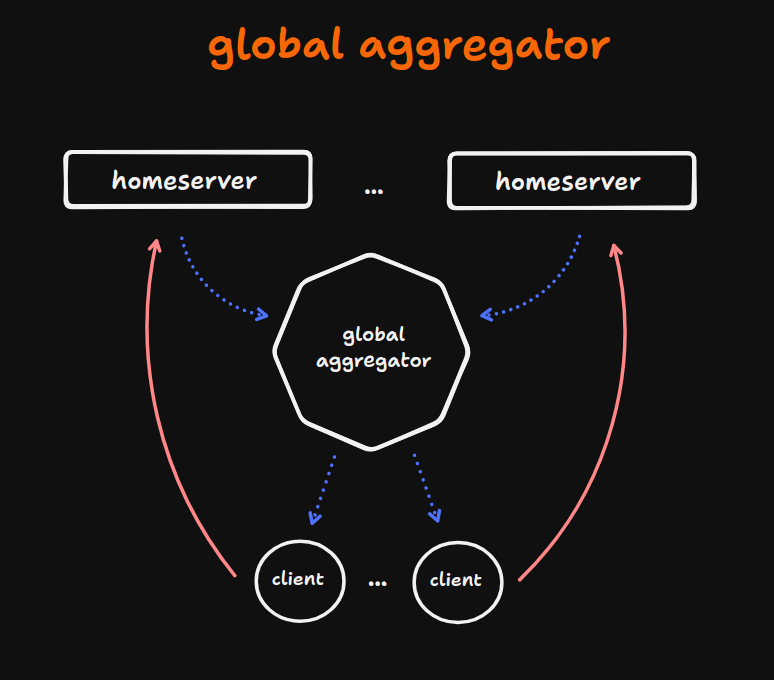
This architectural pattern implements a distributed system model centered around a global aggregation layer, eliminating the need to fetch data from a multitude (maybe thousands!) of homesevers by the client. The core component of this design is a centralized global aggregator that interfaces with multiple home servers, consuming events from each in a unified manner.
Key features of this architecture include:
- Centralized Event Processing: The global aggregator serves as a single point of convergence for event streams originating from disparate home servers across the network.
- Policy-Driven Filtering: The aggregators can optionally implement a configurable set of policies and filtering rules, allowing for dynamic event processing based on predefined criteria.
- Client Flexibility and Aggregator Choice: Clients consume data from the global aggregator stream. However, if a client finds the enforced rules of one aggregator unsuitable, it retains the flexibility to switch to an alternative global aggregator that better aligns with its requirements or selectively look for the homeservers itself.
- Scalable Event Distribution: By centralizing the aggregation process, this architecture facilitates efficient event distribution to multiple clients, potentially reducing redundant processing and network overhead.